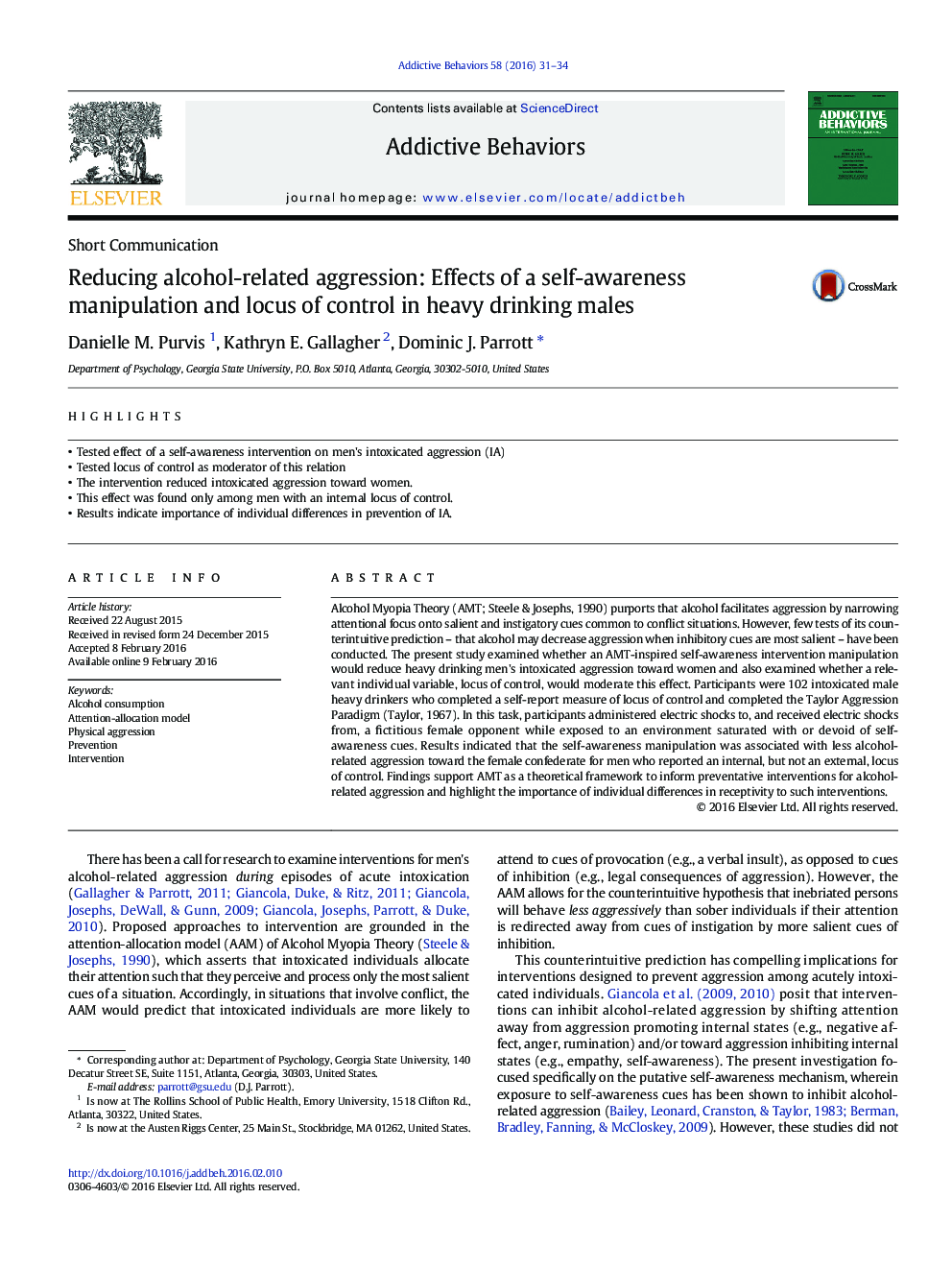| Article ID | Journal | Published Year | Pages | File Type |
|---|---|---|---|---|
| 7260305 | Addictive Behaviors | 2016 | 4 Pages |
Abstract
Alcohol Myopia Theory (AMT; Steele & Josephs, 1990) purports that alcohol facilitates aggression by narrowing attentional focus onto salient and instigatory cues common to conflict situations. However, few tests of its counterintuitive prediction - that alcohol may decrease aggression when inhibitory cues are most salient - have been conducted. The present study examined whether an AMT-inspired self-awareness intervention manipulation would reduce heavy drinking men's intoxicated aggression toward women and also examined whether a relevant individual variable, locus of control, would moderate this effect. Participants were 102 intoxicated male heavy drinkers who completed a self-report measure of locus of control and completed the Taylor Aggression Paradigm (Taylor, 1967). In this task, participants administered electric shocks to, and received electric shocks from, a fictitious female opponent while exposed to an environment saturated with or devoid of self-awareness cues. Results indicated that the self-awareness manipulation was associated with less alcohol-related aggression toward the female confederate for men who reported an internal, but not an external, locus of control. Findings support AMT as a theoretical framework to inform preventative interventions for alcohol-related aggression and highlight the importance of individual differences in receptivity to such interventions.
Related Topics
Life Sciences
Neuroscience
Behavioral Neuroscience
Authors
Danielle M. Purvis, Kathryn E. Gallagher, Dominic J. Parrott,
